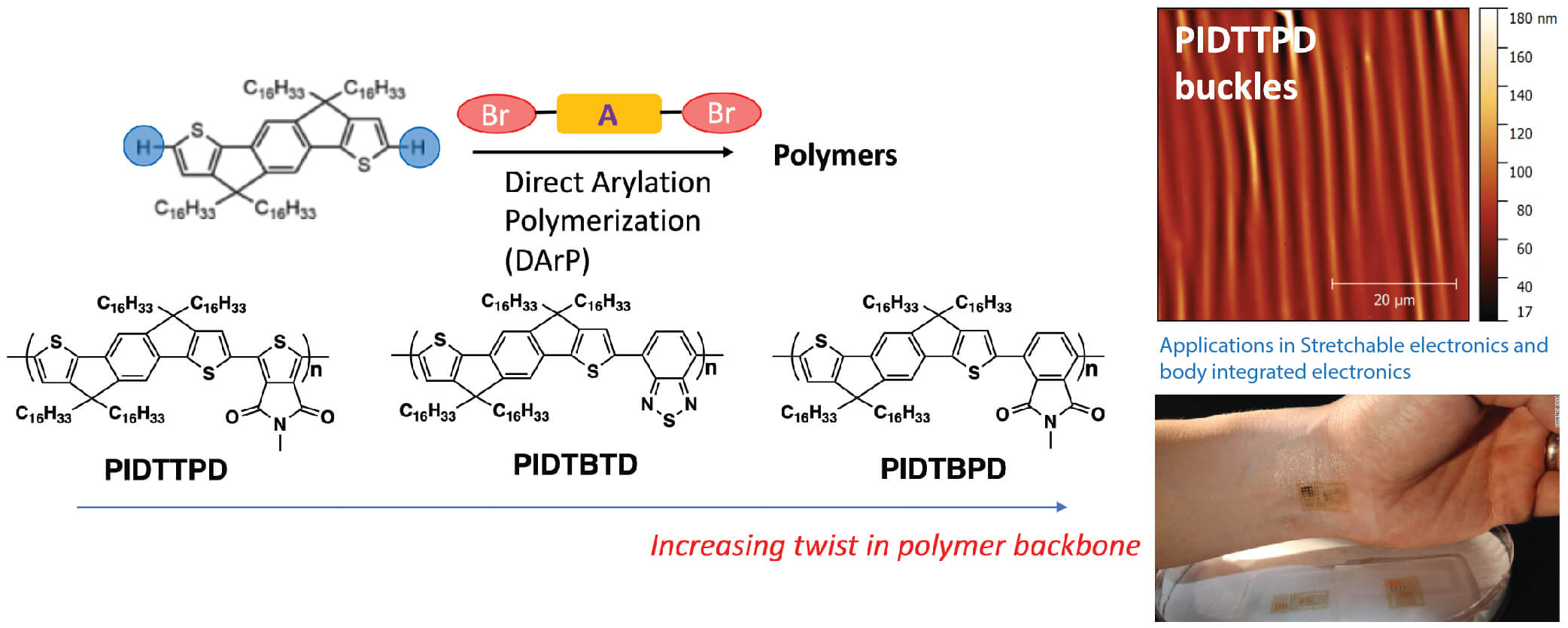Low Elastic Modulus and High Charge Mobility of Low-Crystallinity Indacenodithiophene-Based Semiconducting Polymers for Potential Applications in Stretchable Electronics
Yilin Li, Wesley K. Tatum, Jonathan W. Onorato, Yongcao Zhang, and Christine K. Luscombe
Macromolecules,
2018, 51, (16), 6352-6358; DOI:10.1021/acs.macromol.8b00898

08/2018
In the past two decades, the field of semiconducting polymers has advanced significantly because of extensive research on organic photovoltaics (OPVs), organic field-effect transistors (OFETs), organic light-emitting diodes (OLEDs), and organic thermoelectrics (OTEs). As a consequence, materials with excellent optical, electrical, and thermal properties have been developed. Recently, investigation of the mechanical properties of semiconducting polymers has increased, due in part to the emergence of biomedical devices for physiological monitoring,5 implanted treatments, electronic skin, and human−machine interfaces. Semiconducting polymers require mechanical compatibility with biological tissue to be suitable for bioelectronics applications. Traditional approaches that impart mechanical compliance to semiconducting devices are based on geometric designs, such as buckles, wavy patterns, and kirigami. Increasingly, attention has been paid to semiconducting polymers with intrinsic mechanical compliance, largely due to the potential advantages of easier production, reduced constraints on large scale device design, higher device density, and improved strain tolerance. In contrast to flexibility, which is the property of a material to withstand bending deformation, stretchability additionally includes deformation under tensile modes. Flexibility is easily achievable, as making a material thin is typically enough to impart flexibility. Achieving stretchability of semiconducting polymers is typically difficult because in most cases tensile deformation results in permanent alterations to the microstructure, significantly affecting the charge transport properties.
In this paper, a series of indacenodithiophene (IDT) copolymers were synthesized which were shown to have low elastic moduli, high ductility, and high charge mobility, which are properties that are highly desirable for stretchable electronics. What was most valuable in terms of synthesizing the polymers was our ability to use C-H activation for the key polymerization step by being part of CCHF. Specifically, all polymers were synthesized direct arylation polymerization (DArP). The use of DArP simplified the synthesis significantly and allowed us to obtain polymers of similar molecular weights and dispersities enabling us to perform fair and meaningful structure-property relationship studies on the materials. The work was carried out by CCHF post-doc Yilin Li, graduate students Wesley Tatum and Jonathan Onorato, as well as master’s student Yongcao Zhang.